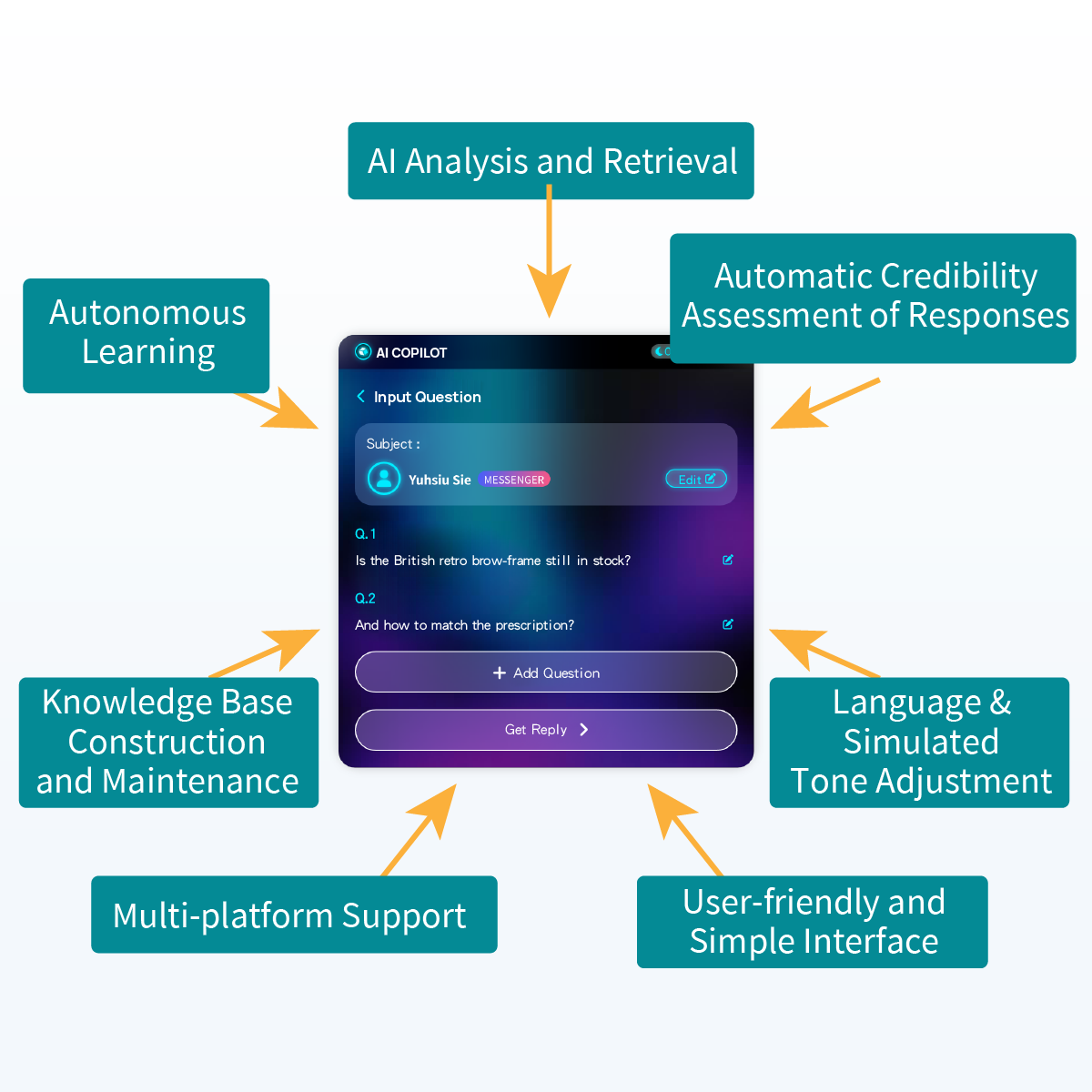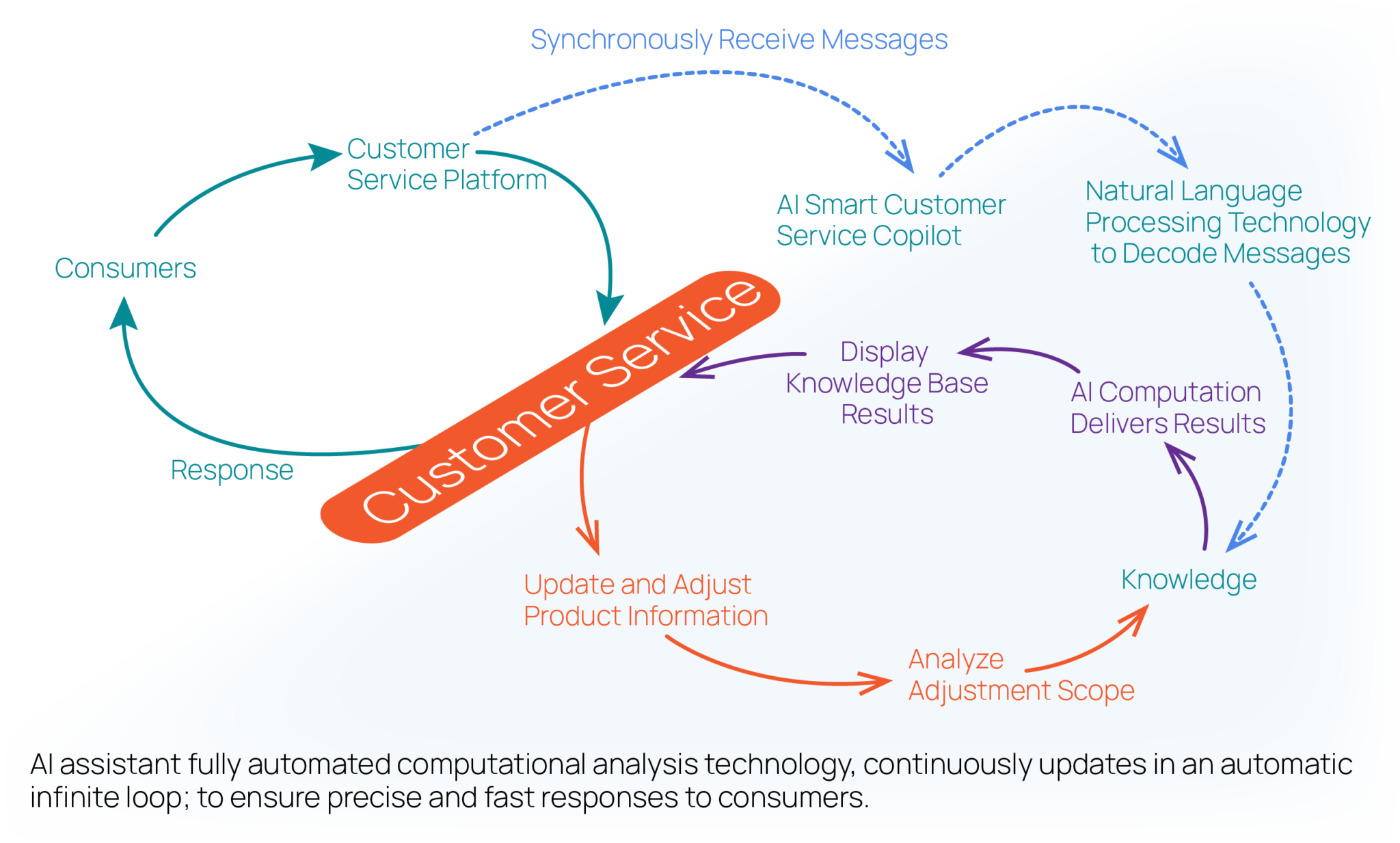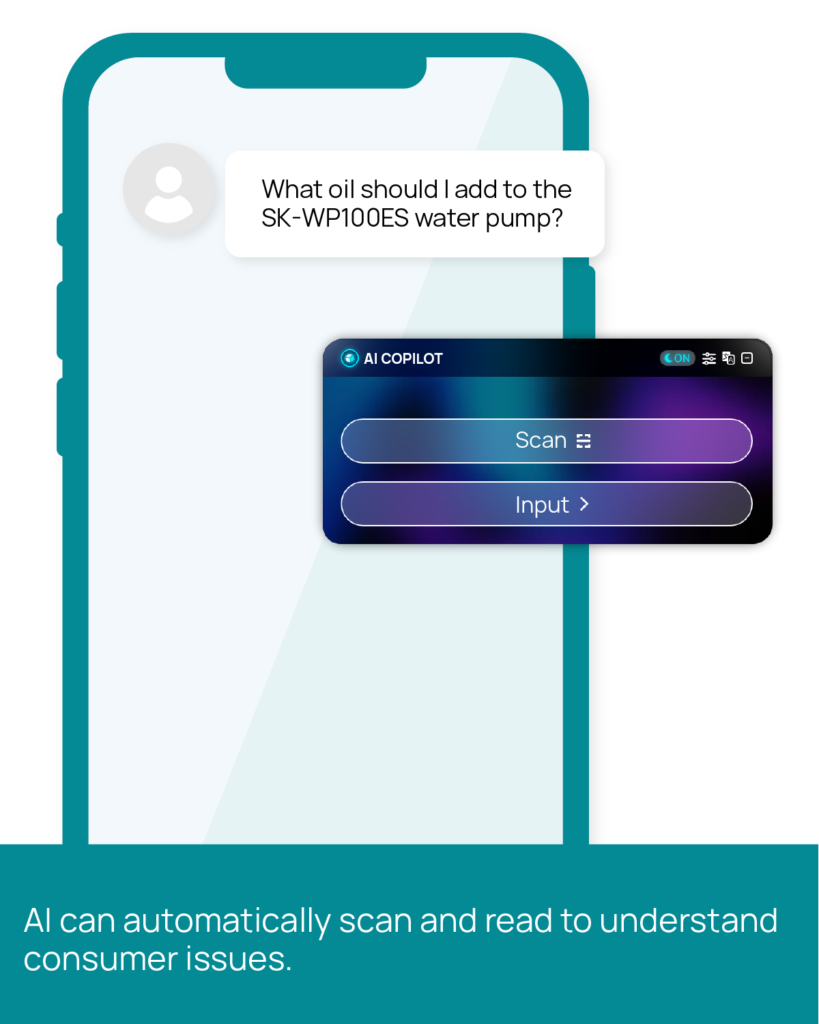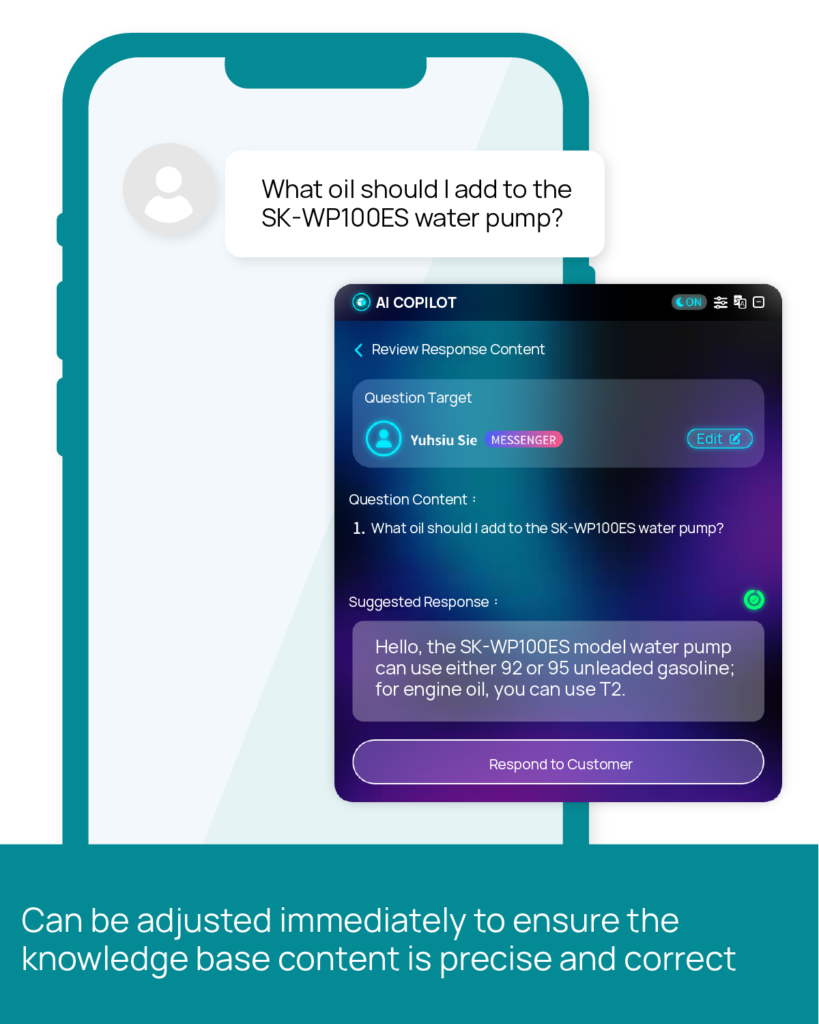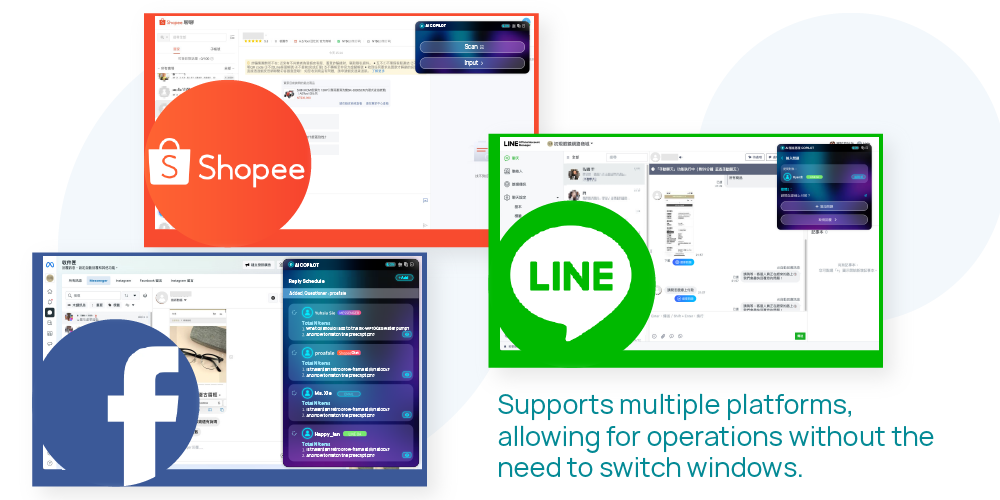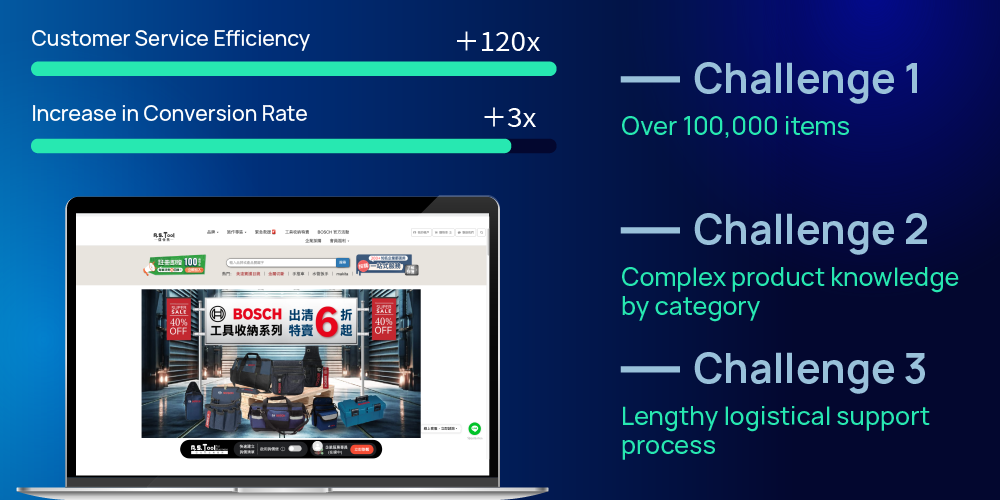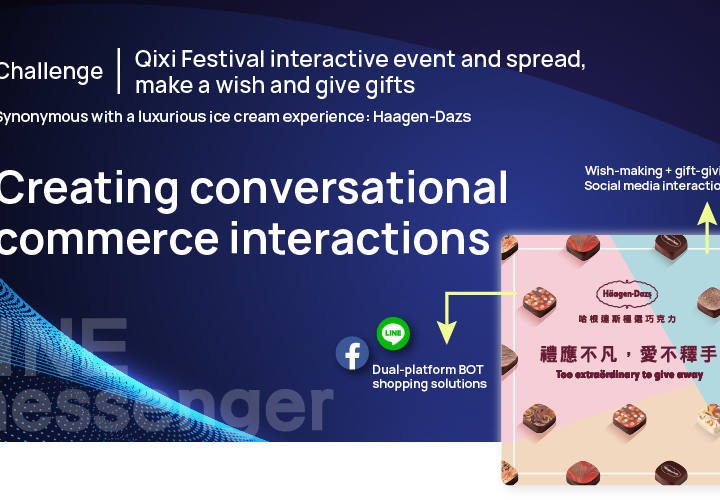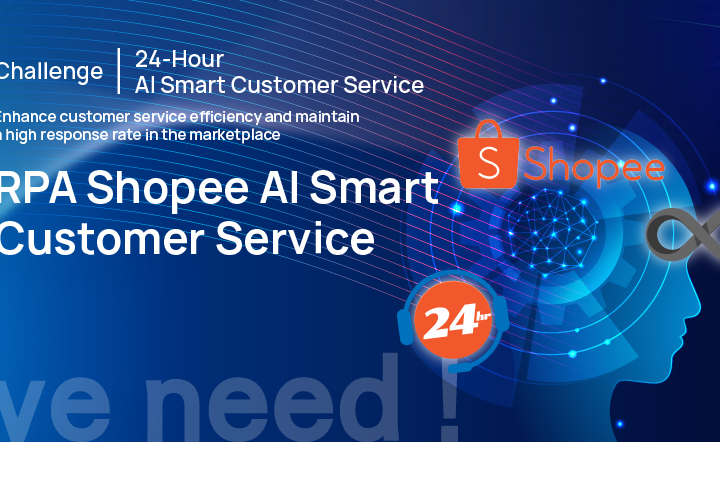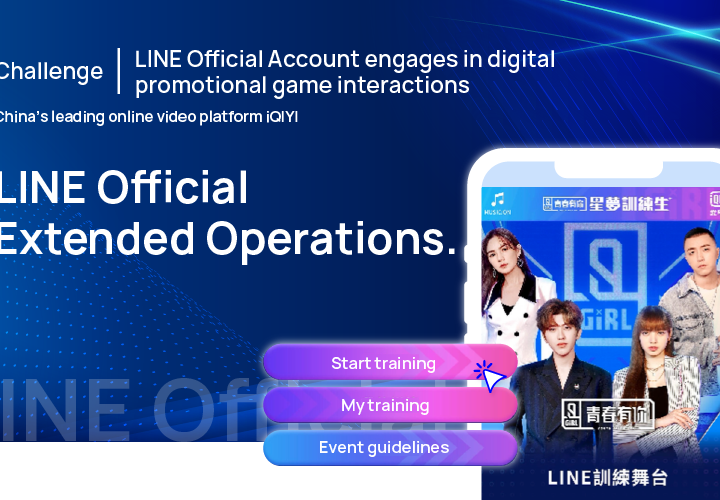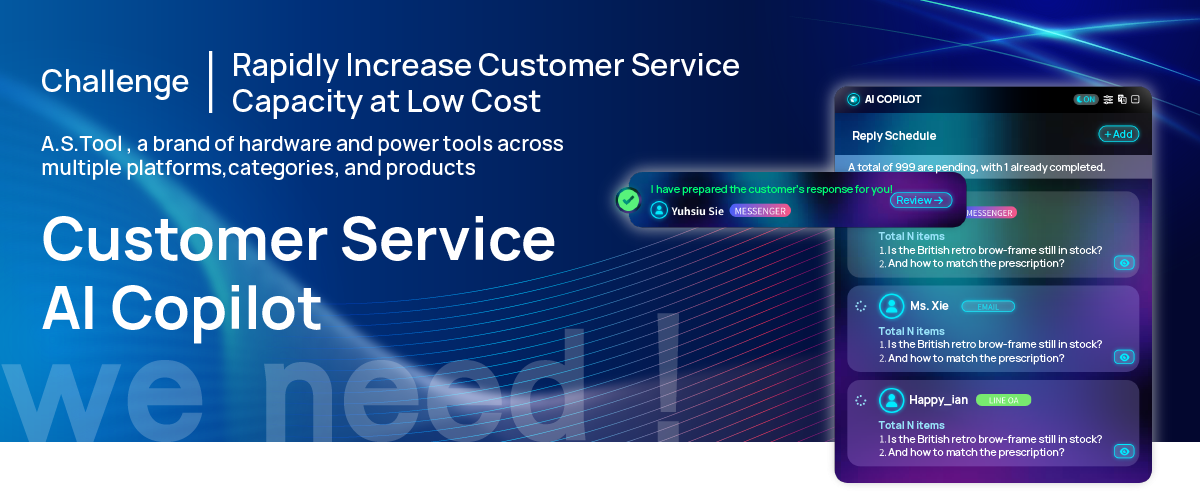

The client this time is a digital e-commerce platform for hardware and power tools. They offer sales of various brands of hardware hand tools and power tools through multiple channels. In addition to catering to general consumers (B2C), they also engage in B2B enterprise procurement.
Having been in the industry for almost 5 years since its inception, the brand has continuously grown. However, they are now facing a new challenge: their customer service capacity is far from sufficient. Sales reports have clearly indicated that this directly affects marketing efforts.
Training customer service personnel to be fully capable of handling customer queries independently takes time. Moreover, due to the high level of industry expertise and the vast number of product categories and items—exceeding tens of thousands—the time and cost required for training have become immeasurable.
The client expressed, “Each product has its specific usage scenarios and detailed specifications. For users, there can be no room for error. If customer service representatives do not have a complete understanding of the products, it will lead to countless after-sales and complaint issues.”


In addition to the official website, the client also operates multiple social media platforms, including:
– Meta Facebook fan page
– Instagram
– LINE Official Account (OA)
– Corporate procurement portal
– Major e-commerce platforms such as MOMO, PChome, and Shopee
The influx of inquiries across these various channels, including inquiries about specifications, usage scenarios, product recommendations, and detailed product specifications, necessitates a significant increase in customer service capacity. When customer service representatives do not possess complete knowledge of all products, they must repeatedly seek internal assistance, resulting in a slow response rate. As a result, consumers are unable to obtain the necessary information promptly, leading to the loss of orders that would otherwise have been completed.

Faced with the challenges of multi-platform customer service and product information accuracy at the A.S.Tool online flagship store, we first conducted a detailed analysis of the business process to identify key factors affecting response efficiency and quality.
We found that automation and artificial intelligence technology are the key to improving customer service efficiency.
Using AI technology to improve the customer interaction experience can alleviate the burden on human customer service.
The system needs to be able to understand consumers’ questions about products and address them. For user convenience, it should be present on all different social media platforms, resolving customer queries and providing accurate, timely product information and solutions.
Improve the efficiency of customer service responses and reduce manpower costs.
Establish a comprehensive product knowledge database, regularly updated with the latest information on all products.
Automatically analyze and understand consumer inquiries. The system should generate multiple pre-set response messages based on the analysis. Customer service representatives can select the most appropriate message for the response without the need for internal confirmation.
Continuously update the response information in the knowledge base, automate re-learning, and enhance the accuracy of response messages.

Automatically import data from enterprise databases and utilize artificial intelligence models to extract, summarize, and analyze enterprise data, providing support for customer service.
The knowledge base will autonomously learn and update based on actual customer interactions, reducing the cost of manual maintenance.
The CSAC intelligent customer service assistant can autonomously learn during real-time interactions, continuously improving the accuracy and relevance of responses through supervised learning and feedback mechanisms.
Support for multiple social media and customer service platforms, providing a unified operating interface for customer service personnel through the Google Chrome Extension. This enables customer service to manage all customer interactions in one interface, improving work efficiency.
By conducting in-depth analysis of customer inquiries, understanding their intent, and retrieving relevant information from the knowledge base, AI automatically generates suggested responses, reducing the time spent by customer service representatives searching for and verifying information.
Provide response suggestions to customer service representatives while simultaneously evaluating the credibility of these responses, enabling customer service agents to trust and select the most appropriate answers.
When the answer to a question is ready, the system will prompt the customer service representative and provide shortcut keys for quick response. Additionally, the interface can be minimized to reduce clutter in the workspace.
Provide real-time bidirectional translation functionality, supporting multilingual customer service, and allow adjustment of the tone of replies to match the company’s image or meet the communication style expectations of different customers.
